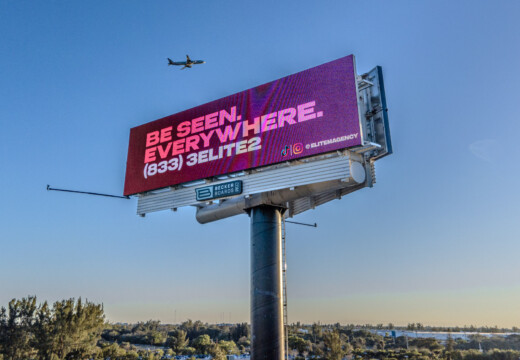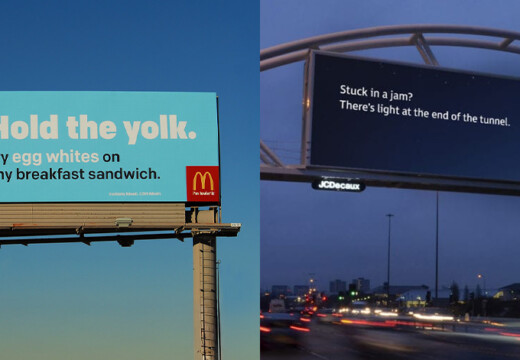Billboard ad frequency is how often your ad appears during a campaign. Striking the right balance is crucial: too few displays, and your message is forgotten; too many, and your audience gets annoyed. Here’s what you need to know:
- High Frequency: Boosts brand recognition and message retention but risks audience fatigue.
- Low Frequency: Saves money but often fails to make an impact.
- Key Metrics to Track: Daily impressions, peak hours, and viewing time.
- Best Practices:
- Rotate ad content regularly to keep it fresh.
- Schedule ads during peak traffic or local events.
- Use data to adjust frequency in real time.
Pro Tip: Tools like Blip’s real-time analytics and bidding system make frequency adjustments easy, ensuring your campaign stays effective without overspending.
What are the differences between digital billboards and traditional static billboards?
How Frequency Changes Ad Results
Grasping how frequency affects your advertising outcomes can make a big difference in campaign success. Let’s look at how high and low display frequencies influence results.
Effects of High Display Frequency
Running ads at a high frequency can offer clear benefits. It helps your message stick, boosts brand awareness, and encourages more engagement. However, there’s a fine line – too many displays can lead to audience fatigue and wasted ad spend.
Why High Frequency Works:
- Better message retention: Repetition helps people remember your message.
- Improved brand recognition: Seeing your ad often makes your brand more familiar.
- Higher engagement: Frequent exposure increases the chances of interaction.
Take Mr. Charlie’s Chicken Fingers as an example. Paul Willey, the owner, shared how high-frequency displays helped his business:
"Working with Blip has given Mr. Charlie’s the momentum to get our new location on the map while accelerating growth for our original location".
But what happens when your display frequency is too low? That’s where challenges arise.
Problems with Low Display Frequency
Low-frequency campaigns often fail to make an impact. With fewer displays, your brand gets less exposure, your message becomes forgettable, and your return on investment (ROI) takes a hit.
Chris Leslie, Founder of Leslie Lightcraft Co, highlights the importance of visibility:
"It’s not a social media thing that you see on your phone. It’s not word-of-mouth. It’s big and bold and out there in public. I would say this is the first step of looking big and public".
In short, finding the right balance in display frequency is key to maximizing your ad campaign’s effectiveness. Too much or too little can make or break your efforts.
Measuring and Setting the Right Frequency
To get the most out of your billboard campaigns, it’s essential to measure and fine-tune your ad frequency. By keeping an eye on key metrics and adjusting your approach, you can ensure your message resonates with your audience. Let’s break down how to calculate frequency and tailor it to different campaign needs and locations.
Basic Frequency Calculation
The formula for frequency is simple: Frequency = Total Impressions ÷ Reach.
Digital billboards provide real-time tracking, offering accurate insights into your campaign’s performance. Here are some key metrics to monitor:
| Metric | Definition | Importance |
|---|---|---|
| Daily Impressions | Number of people viewing your ad each day | Helps gauge your campaign’s daily reach |
| Average Viewing Time | How long viewers engage with your ad | Indicates how well your message is absorbed |
| Peak Hours Performance | Times when your ad gets the most views | Helps you schedule ads for maximum visibility |
Short-term vs. Long-term Campaign Frequency
The length of your campaign plays a big role in determining frequency. For short-term, event-focused campaigns, a higher ad frequency is essential to create immediate impact. On the other hand, longer campaigns benefit from a more measured approach to maintain consistent exposure without overwhelming your audience.
Ray Bowens, Founder of Hashtag-Vape, highlights the value of frequency management in billboard advertising:
"Billboards are one of the most impactful ways to advertise, and with Blip, you spend a fraction of what you would end up paying elsewhere".
How Location Affects Frequency
Where your billboard is placed is just as important as how often it runs. Here’s how to tailor frequency by location:
- High-Traffic Urban Areas: These spots provide short viewing windows but frequent exposure. Consider factors like vehicle speed, traffic flow, and pedestrian activity when setting frequency.
- Highway Locations: With faster-moving traffic and longer viewing distances, especially during peak commute times, you’ll need to adjust frequency to ensure your message is seen clearly.
- Commercial Districts: Focus on business hours and adapt your schedule for weekends or local events. As Kimberly Pinkson, Owner of Pretty In Pinkston, shares:
"Blip works for us. It’s a different medium, and it brings a lot of exposure. It sets us apart from the rest of the [competition], and that’s what I like".
sbb-itb-2e2e93f
4 Ways to Control Billboard Frequency
Finding the right balance for your billboard frequency can make or break your ad’s success. Here’s how you can fine-tune your approach to get the most out of your campaigns.
Changing Ad Content Regularly
Keeping your ads fresh is key to holding your audience’s attention and avoiding ad fatigue. A well-planned content rotation can make all the difference.
| Timeframe | Content Strategy | Goal |
|---|---|---|
| Daily | Alternate between 2–3 ad variations | Keep things fresh for daily commuters |
| Weekly | Roll out new designs | Highlight current promotions or events |
| Monthly | Overhaul creative themes | Ensure messaging stays relevant and engaging |
Time and Place Scheduling
Timing and location are everything when it comes to billboard effectiveness. Strategically scheduling when and where your ads appear can significantly boost visibility. Paul Willey, the owner of Mr. Charlie’s Chicken Fingers, shares his experience:
"Working with Blip has given Mr. Charlie’s the momentum to get our new location on the map while accelerating growth for our original location".
Here are some important scheduling considerations:
- Peak Traffic Hours: Focus on high-traffic windows like morning commutes (6:00 AM–9:00 AM) and evening rush hours (4:00 PM–7:00 PM).
- Local Events: Ramp up ad frequency during conventions, sports games, or festivals to catch larger audiences.
- Business Hours: Sync your displays with your operating hours to drive immediate customer action.
Using Data to Adjust Frequency
Harnessing data is one of the smartest ways to fine-tune your billboard campaigns. Real-time analytics allow you to make informed decisions and adapt on the fly. Key metrics to track include:
- Daily Impression Goals: Compare actual views to your targets and adjust as needed.
- Engagement Patterns: Identify when your ads perform best and optimize for those times.
- Cost Efficiency: Monitor your cost per thousand impressions (CPM) to ensure you’re getting the most value from your budget.
These insights, combined with Blip’s frequency management tools, give you the flexibility to adapt and maximize your campaign’s impact.
Blip‘s Frequency Management Tools

Effectively managing billboard frequency requires tools that offer precise control over your campaigns. Building on the earlier discussion of frequency metrics, Blip provides a set of tools designed to simplify and refine this process.
10-Minute Bidding System
Blip’s bidding system refreshes every 10 minutes, giving advertisers dynamic control over how often their ads are displayed. With this system, you can:
- Adjust bids to reflect performance at different times of the day.
- React quickly to shifts in traffic patterns.
- Scale frequency up or down based on immediate campaign results.
This level of flexibility ensures your campaigns remain responsive to real-time conditions, a feature highly valued by industry professionals.
Performance Tracking Tools
Blip’s analytics dashboard delivers real-time insights into how your campaign is performing. Here are some key metrics you can monitor:
| Metric | What It Measures | How It Helps |
|---|---|---|
| Daily Impressions | Number of people who see your ad | Helps you gauge reach and refine frequency targets. |
| Average CPM | Cost per thousand views | Allows you to track and manage budget efficiency. |
| Peak Hours | Times with the highest engagement | Helps you optimize scheduling for maximum impact. |
"Billboards are one of the most impactful ways to advertise, and with Blip, you spend a fraction of what you would end up paying elsewhere".
Easy Schedule Management
Armed with performance data, you can fine-tune your ad schedule with ease. Blip’s user-friendly interface allows you to:
- Create custom display windows tailored to traffic trends.
- Develop location-specific schedules to target key areas.
- Adjust frequency in real time, ensuring your ads are always optimized.
"Blip works for us. It’s a different medium, and it brings a lot of exposure. It sets us apart from the rest of the [competition], and that’s what I like."
With a minimum daily budget of just $20 and a pay-per-play model, Blip ensures you have full control over both your campaign’s frequency and spending. This combination of flexibility and affordability makes it an appealing choice for advertisers looking to maximize their impact.
Conclusion: Keys to Successful Frequency Management
Effectively managing billboard frequency is all about finding the right balance and using the best tools to achieve your goals.
Here are three guiding principles to keep in mind:
| Principle | Key Action | Expected Outcome |
|---|---|---|
| Dynamic Control | Adjust display frequency with real-time bidding | Optimized ad exposure based on traffic patterns |
| Data-Driven Decisions | Track performance metrics to guide scheduling | Improved ROI by targeting the best display times |
| Budget Optimization | Start with at least $20/day and scale as needed | Manage campaigns cost-effectively |
By making real-time adjustments, you can maximize your campaign’s impact, ensuring that your ads reach the right audience without wasting resources.
Striking a balance with frequency is critical to staying visible without overwhelming your audience. Fine-tune your campaigns with these strategies:
- Target peak performance hours to focus displays during times that drive the most engagement.
- Adapt bid strategies based on live engagement data to stay competitive.
- Keep your brand consistently visible while avoiding overexposure that can lead to audience fatigue.
- Scale campaigns gradually by analyzing performance metrics to guide growth.
These approaches help ensure your campaigns remain effective, efficient, and impactful.
FAQs
How do I find the right frequency for my billboard ads to maximize impact without overwhelming my audience?
Finding the right rhythm for your billboard ad campaign can make all the difference. Show your ad too often, and you risk wearing out your audience. Show it too little, and you may not make the impact you’re aiming for.
To find that sweet spot, think about your campaign goals, who you’re trying to reach, and how much you’re willing to spend. Dive into data like impressions and engagement rates to understand how well your ad is catching attention. Platforms like Blip, a self-serve digital billboard service, make this easier by letting you track performance and tweak your ad frequency in real-time. Plus, their pay-per-play model gives you the freedom to test various schedules without locking into a long-term commitment.
Consistency matters, but so does keeping things fresh. Experiment with different times and locations to ensure your message stays engaging and relevant to your audience.
What metrics should I track to optimize my billboard ad frequency in real time?
To get the most out of your billboard ad frequency, keep a close eye on key metrics like impressions, engagement rates, and cost per thousand impressions (CPM). These numbers give you a clear picture of how often your ad is being displayed, how well it connects with your audience, and how effectively your budget is being spent.
Tracking these metrics allows you to fine-tune your campaign. The goal is to strike the perfect balance – showing your ad often enough to leave a lasting impression, but not so much that it becomes repetitive or wastes resources. Tools like Blip simplify this process with real-time analytics and flexible scheduling, helping you make smarter, data-driven decisions to get the most out of your advertising efforts.
How does billboard location impact ad frequency, and what should I consider when scheduling ads in different areas?
The location of your billboard is a major factor in deciding how often your ad should appear. Things like traffic flow, the type of people passing by, and local commuting habits all impact how many times your ad gets noticed and how effective it will be.
When planning your ad schedule, focus on high-traffic spots where your audience is most likely to see it regularly. In busy urban areas with lots of cars or pedestrians, running your ad more frequently can help it stand out among the noise. On the other hand, in quieter, rural locations, fewer repetitions might be enough to make an impression.
Striking the right balance is key – it keeps your ad memorable without overloading viewers. Tools like Blip let you easily tweak your ad schedule and experiment with different approaches, so you can fine-tune your strategy based on the unique traits of each location.
Related posts
- Reach and Frequency in OOH: Best Practices
- Message Frequency for Billboard Ads
- How Data Improves Billboard Audience Targeting
- How to Analyze Billboard Engagement Metrics
Finding the right rhythm for your billboard ad campaign can make all the difference. Show your ad too often, and you risk wearing out your audience. Show it too little, and you may not make the impact you’re aiming for.
To find that sweet spot, think about your campaign goals, who you’re trying to reach, and how much you’re willing to spend. Dive into data like impressions and engagement rates to understand how well your ad is catching attention. Platforms like Blip, a self-serve digital billboard service, make this easier by letting you track performance and tweak your ad frequency in real-time. Plus, their pay-per-play model gives you the freedom to test various schedules without locking into a long-term commitment.
Consistency matters, but so does keeping things fresh. Experiment with different times and locations to ensure your message stays engaging and relevant to your audience.
"}},{"@type":"Question","name":"What metrics should I track to optimize my billboard ad frequency in real time?","acceptedAnswer":{"@type":"Answer","text":"
To get the most out of your billboard ad frequency, keep a close eye on key metrics like impressions, engagement rates, and cost per thousand impressions (CPM). These numbers give you a clear picture of how often your ad is being displayed, how well it connects with your audience, and how effectively your budget is being spent.
Tracking these metrics allows you to fine-tune your campaign. The goal is to strike the perfect balance - showing your ad often enough to leave a lasting impression, but not so much that it becomes repetitive or wastes resources. Tools like Blip simplify this process with real-time analytics and flexible scheduling, helping you make smarter, data-driven decisions to get the most out of your advertising efforts.
"}},{"@type":"Question","name":"How does billboard location impact ad frequency, and what should I consider when scheduling ads in different areas?","acceptedAnswer":{"@type":"Answer","text":"
The location of your billboard is a major factor in deciding how often your ad should appear. Things like traffic flow, the type of people passing by, and local commuting habits all impact how many times your ad gets noticed and how effective it will be.
When planning your ad schedule, focus on high-traffic spots where your audience is most likely to see it regularly. In busy urban areas with lots of cars or pedestrians, running your ad more frequently can help it stand out among the noise. On the other hand, in quieter, rural locations, fewer repetitions might be enough to make an impression.
Striking the right balance is key - it keeps your ad memorable without overloading viewers. Tools like Blip let you easily tweak your ad schedule and experiment with different approaches, so you can fine-tune your strategy based on the unique traits of each location.
"}}]}


